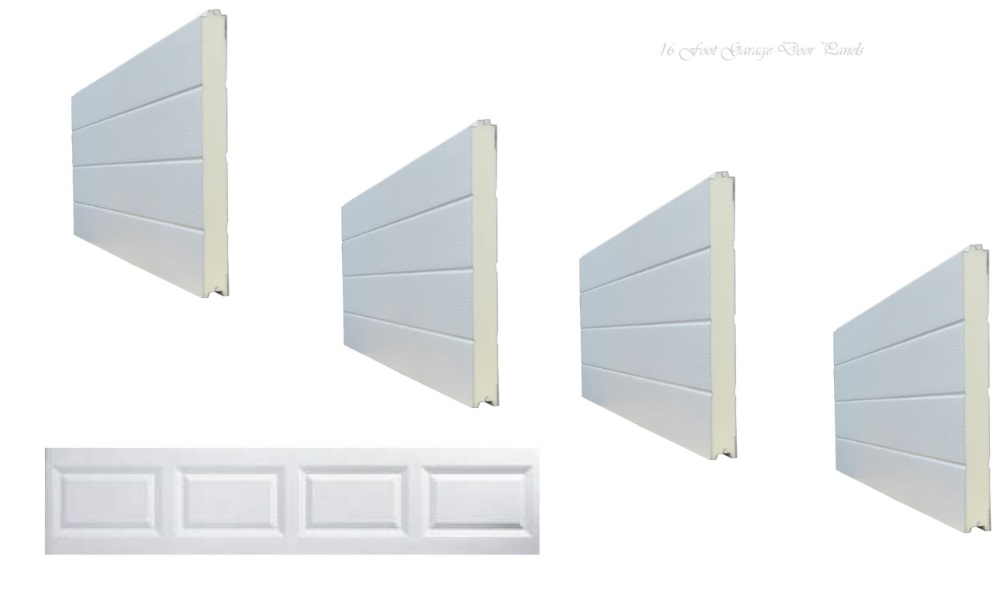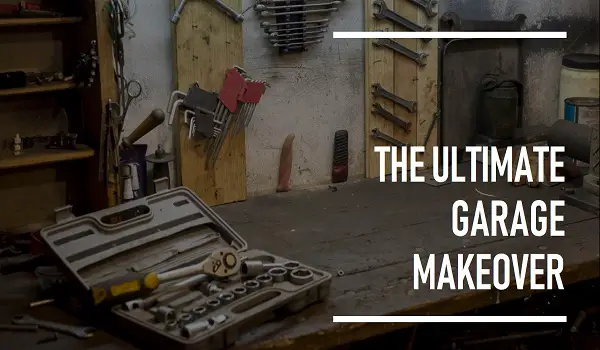Mastering Electric Hand Wood Saws: Types, Tips, and Safety
Electric hand wood saws are a cornerstone tool in the arsenal of any woodworker. These versatile devices have revolutionized the […]
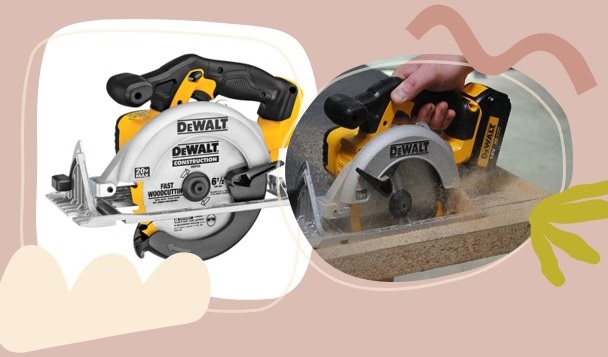
Electric hand wood saws are a cornerstone tool in the arsenal of any woodworker.
These versatile devices have revolutionized the way wood is cut and shaped, offering precision and efficiency that traditional manual saws simply can’t match.
In this comprehensive guide, I will take you on a journey through the world of electric hand wood saws, drawing on my firsthand experience to provide insights into their types, benefits, selection, safe usage, troubleshooting, and maintenance.
Whether you’re a seasoned pro or a woodworking novice just starting your journey, this article is your gateway to mastering electric hand wood saws.
What is an Electric Hand Wood Saw?
Before we dive into the finer details, let’s establish the basics. An electric hand wood saw is a portable power tool designed specifically for effortlessly cutting through wood.
Unlike their bulkier stationary counterparts, these handheld marvels provide woodworkers with unmatched flexibility, enabling precise cuts, smaller projects, and work in tight spaces.
Their power source is electricity, making them incredibly efficient and capable of slicing through various wood types with both finesse and speed.
You may also like: Garage Workbench Ideas
Types of Electric Hand Wood Saws
Electric hand wood saws come in various types, each tailored to specific woodworking tasks. Drawing from my experience, here are some of the most common types:
1. Circular Saw
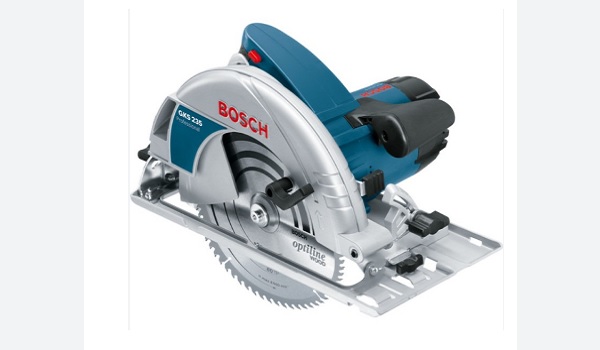
The circular saw, a personal favorite of mine, stands as a woodworking workhorse.
It boasts a circular blade adorned with sharp teeth, spinning at breakneck speeds.
This design makes it perfect for ripping through boards and crafting precise straight cuts. The versatility of circular saws renders them suitable for a vast array of projects.
2. Jig saw
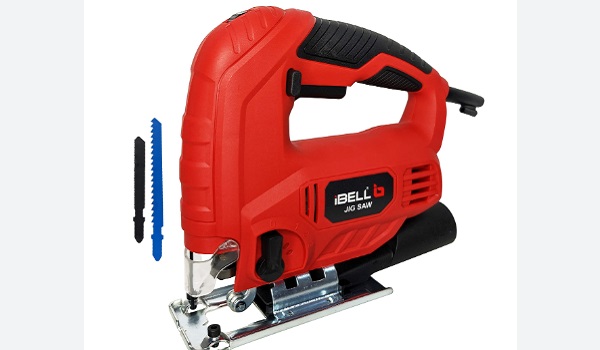
A jig saw is a handheld saw that is used to make curved and intricate cuts in wood. It has a thin, reciprocating blade that moves up and down quickly, allowing it to follow precise lines.
3. Reciprocating saw

A reciprocating saw is a powerful saw that is used to make fast, rough cuts in wood.
It has a long, reciprocating blade that moves in and out quickly, making it easy to cut through thick pieces of wood, metal, and other materials.
4. Scroll saw
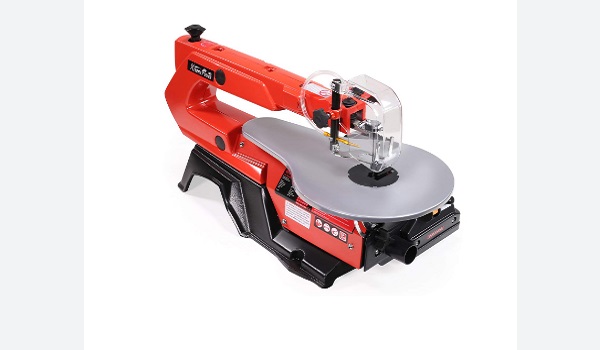
A scroll saw is a small, stationary saw that is used to make delicate cuts in wood.
It has a thin, reciprocating blade that moves up and down quickly, allowing it to follow precise lines.
5. Chain saw

A chain saw is a portable saw that is used to cut trees and other large pieces of wood.
It has a rotating chain with sharp teeth that cuts through the wood as the chain is pulled through it.
Top 5 Electric Hand Wood Saws
The top 5 electric hand wood saws that are perfect for various cutting applications, from DIY projects to professional woodworking.
1. Rockwell / Worx Rockwell Versacut 4.0 Amp Ultra-Compact Circular Saw
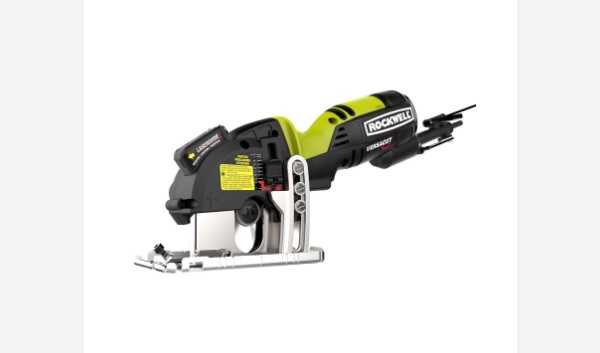
The Rockwell / Worx Rockwell Versacut 4.0 Amp Ultra-Compact Circular Saw is a versatile and powerful tool that’s perfect for a variety of cutting applications.
With a 4.0 amp motor delivering 3,500 RPM, it offers fast and efficient cutting performance. Its lightweight and compact design make it easy to maneuver, even in tight spaces.
Key Features:
- Laser indicator for precise cuts
- 3-blade kit for cutting wood, metal, and tile
- Carry case for convenient storage and transport
- Dust extraction adapter for a clean work area
- Ergonomic design for comfortable use
Pros:
- Lightweight and compact
- Powerful motor
- Versatile with multiple blades
- Convenient carry case
- Ergonomic design for comfort
Cons:
- Some users reported accuracy issues with the laser indicator
2. Dewalt Atomic 20v Max Circular Saw
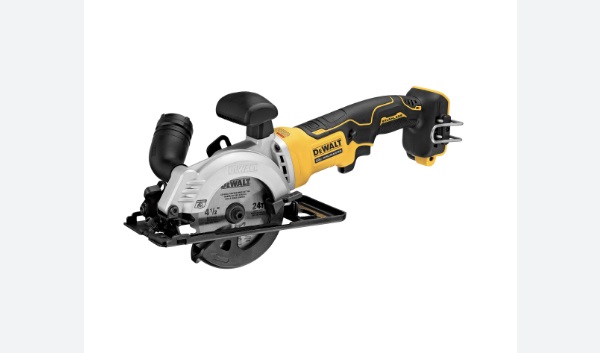
The DEWALT ATOMIC 20V MAX Circular Saw is a lightweight and compact cordless circular saw that’s perfect for various cutting tasks.
With a brushless motor delivering up to 3,700 RPM, it offers efficient cutting performance. It features a durable magnesium base, a built-in dust blower, and an LED work light for added convenience.
Key Features:
- Tool-less blade change for quick adjustments
- Compatible with all DEWALT 20V MAX* batteries
- Ergonomic design for comfortable use
Pros:
- Lightweight and compact
- Powerful brushless motor
- Durable magnesium base
- Built-in dust blower and LED light
- Tool-less blade change
Cons:
- Can be expensive
- Limited battery life for heavy use
3. Makita XSS02Z 18V LXT Lithium-Ion Cordless 6-1/2″ Circular Saw
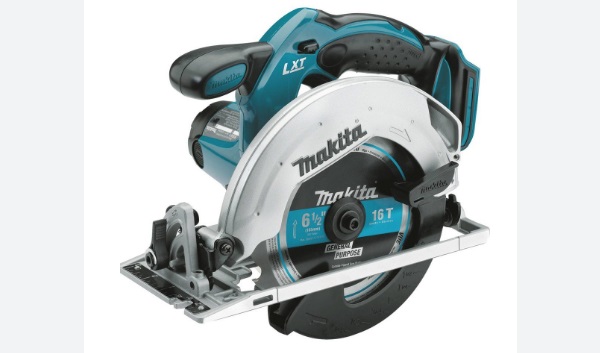
The Makita XSS02Z is a cordless circular saw known for its lightweight and powerful performance. It features a Makita-built high-torque motor that delivers 3,700 RPM for fast cutting.
The precision machined base ensures accurate and smooth cuts, even in demanding job site conditions.
Key Features:
- Electric brake for increased safety
- Built-in dust blower and LED work light
- Compatible with all Makita 18V LXT batteries
Pros:
- Lightweight and compact
- Powerful motor for fast cutting
- Precision machined base
- Electric brake for safety
- Built-in dust blower and LED light
Cons:
- Can be expensive
- Limited battery life for heavy use
4. Mini Chainsaw Cordless Power Electric-Chain-Saws
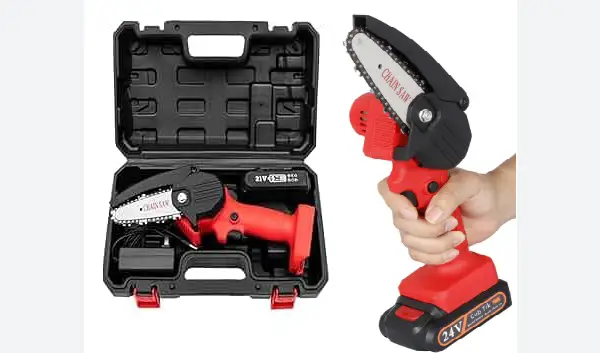
Mini chainsaws are the go-to choice for those who need a portable and easy-to-use chainsaw for tasks like tree trimming and branch cutting.
These cordless chainsaws typically feature a 4- to 6-inch bar and chain, making them lightweight and maneuverable.
Key Features:
- 4-inch bar and chain
- 26V rechargeable battery
- One-hand handheld design
- Safety features including a chain brake and safety glasses
Pros:
- Lightweight and maneuverable
- Safe for occasional use
- Affordable option
- Portable and easy to handle
Cons:
- Not suitable for heavy-duty tasks
- Limited battery life for extended use
- May lack the power for cutting large trees or logs
5. Skil 5080-01 13-Amp 7-1/4″ Circular Saw
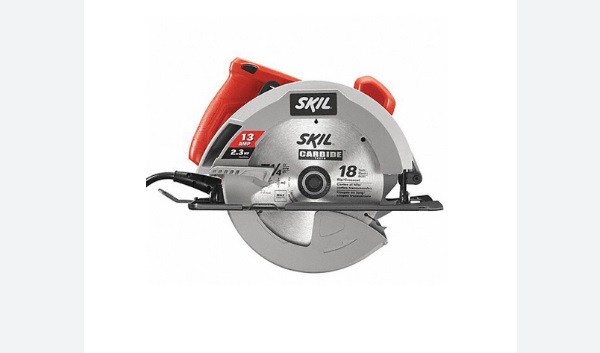
The Skil 5080-01 13-Amp 7-1/4″ Circular Saw is a budget-friendly option suitable for DIYers and occasional users. It offers a balance between affordability and functionality.
With a 13-amp motor and a 7-1/4″ blade capacity, it can handle various cutting tasks.
Key Features:
- 13 amp motor for powerful cutting
- 51-degree bevel adjustment for angled cuts
- Spindle lock for easy blade changes
- Dust blower for a clear cut line
- Ergonomic design for comfort
Pros:
- Affordable price
- Versatile with bevel adjustment
- Easy-to-use features
- Lightweight and maneuverable
Cons:
- Not as powerful as some other circular saws
- May not be suitable for heavy use
Benefits of Using an Electric Hand Wood Saw
My firsthand experience with electric hand wood saws has revealed a multitude of benefits, making them indispensable in any woodworker’s toolbox. Here’s what I’ve learned:
1. Efficiency
Electric hand wood saws are unapologetically efficient. They shave precious time off your projects and reduce the effort required compared to manual saws.
These tools slice through wood with haste and accuracy, elevating productivity in your workshop.
2. Precision
Precision is the name of the game, and electric hand wood saws play it exceptionally well. They grant you the power to create clean, precise cuts, be they straight or curvaceous.
This level of precision is non-negotiable when aiming for professional results.
3. Versatility
One of the key attributes I’ve come to appreciate is the versatility of electric hand wood saws. With various types at your disposal, you can tackle a diverse range of woodworking tasks.
Whether you’re dealing with basic cuts or intricate designs, a single tool can be your trusted companion.
4. Ease of Use
Despite their formidable appearance, these saws are relatively approachable, even for newcomers to woodworking.
I must stress the importance of learning the ropes and adhering to safety guidelines. With the right knowledge and precautions, anyone can harness their potential.
5. Safety
Modern electric hand wood saws are equipped with a range of safety features, such as blade guards and trigger locks, designed to minimize the risk of accidents.
Yet, it’s imperative to remain diligent and scrupulous when it comes to safety practices. Your well-being is paramount.
How to Choose the Right Electric Hand Wood Saw for Your Needs
Selecting the perfect electric hand wood saw hinges on several crucial factors, gleaned from years of working with these tools:
1. Project Requirements
First, consider the types of woodworking projects that frequently grace your workspace. If straight cuts are your bread and butter, a circular saw may be your trusty companion.
If you frequently embark on intricate designs, the jigsaw may be your best friend.
2. Power Source
Electric hand wood saws come in both corded and cordless varieties. Corded saws provide a constant stream of power, while cordless models offer mobility at the cost of potentially limited battery life.
Your choice should align with your specific needs and working conditions.
3. Blade Size
The size of the blade directly impacts the depth of your cuts. Larger blades can tackle thicker materials, whereas smaller ones excel at precision work.
Ensure the blade size aligns with the demands of your projects.
4. Budget
Setting a budget that reflects your woodworking ambitions is paramount. High-end saws might boast advanced features, but there are budget-friendly options that deliver exceptional performance for hobbyists and enthusiasts.
5. Ergonomics
Comfort and ease of handling should never be overlooked. Opt for a saw with a comfortable grip and an ergonomic design. These factors can significantly reduce fatigue during prolonged use.
In the upcoming sections, I’ll delve deeper into the practicalities, starting with safe usage guidelines, moving on to cutting techniques for various wood types, troubleshooting common issues, and concluding with maintenance and care tips to keep your electric hand wood saw performing at its peak.
How to Use an Electric Hand Wood Saw Safely
Safety should always be a top priority when working with electric hand wood saws. These powerful tools can cause serious injuries if not used correctly. Here are some essential safety tips to keep in mind:
1. Wear Appropriate Safety Gear
Always wear safety gear, including safety glasses or a face shield to protect your eyes from flying debris. Additionally, use hearing protection and dust masks to safeguard against noise and dust.
2. Secure Your Workspace
Ensure your work area is clutter-free and well-lit. Secure the wood piece you’re cutting using clamps or a vice to prevent it from moving during the cut. This stability is crucial for accuracy and safety.
3. Keep Hands and Body Clear
Keep your hands and body away from the blade’s path at all times. Use push sticks or blocks to guide the wood through the saw and maintain a safe distance from the blade.
4. Follow Proper Blade Installation
Always ensure the blade is correctly installed and tightened before starting. A loose blade can lead to accidents or poor cutting performance.
5. Disconnect Power When Changing Blades or Adjusting Settings
Before changing blades or adjusting the saw’s settings, unplug or disconnect the power source. This prevents accidental starts while you’re working on the saw.
6. Maintain a Firm Grip
Maintain a firm grip on the saw’s handle with both hands. This provides better control and reduces the risk of the saw kicking back.
7. Use the Right Blade for the Job
Select the appropriate blade for the type of cut and wood you’re working with. Different blades are designed for different tasks, such as ripping, cross-cutting, or cutting specific wood types.
How to Cut Different Types of Wood with an Electric Hand Wood Saw
Electric hand wood saws can handle a wide variety of wood types, from softwoods like pine to hardwoods like oak. Here’s a quick guide on how to cut different types of wood effectively:
1. Softwoods (e.g., Pine, Cedar)
Softwoods are generally easier to cut than hardwoods. A circular saw or jigsaw with a fine-toothed blade is ideal for clean cuts in softwoods. Ensure the blade is sharp for smooth results.
2. Hardwoods (e.g., Oak, Maple)
Hardwoods require a bit more power. A circular saw with a carbide-tipped blade works well for straight cuts, while a jigsaw with a fine-toothed blade is suitable for curved cuts. Take your time and let the saw do the work to prevent overheating and burning.
3. Plywood
When cutting plywood, use a fine-toothed blade to minimize splintering. Support the plywood on a stable surface, and use a guide to ensure straight cuts.
4. Particleboard and MDF
For particleboard and medium-density fiberboard (MDF), a circular saw with a carbide blade or a jigsaw with a sharp blade is suitable. Take care to avoid chipping or tearing the material.
Troubleshooting Common Problems with Electric Hand Wood Saws
Despite their efficiency, electric hand wood saws can encounter problems. Here are some common issues and their solutions:
1. Blade Binding
If the blade binds in the wood, stop immediately. Check for blade alignment and make sure it’s sharp. If the problem persists, the wood may be pinching the blade, so release the wood and adjust your cutting technique.
2. Burning Wood
Burning occurs when the blade is moving too slowly through the wood. Increase the saw’s speed and use a sharp blade to prevent burning. Additionally, applying a lubricant or wax to the blade can reduce friction.
3. Inaccurate Cuts
Inaccurate cuts may result from a misaligned blade or an incorrect cutting technique. Ensure the saw’s baseplate or shoe is flush against the wood, and maintain a steady hand during the cut.
Maintenance and Care for Electric Hand Wood Saws
To prolong the life of your electric hand wood saw and maintain its performance, follow these maintenance tips:
1. Regularly Clean the Saw
Remove sawdust and debris from the saw’s body, blade, and air vents. A clean saw operates more efficiently and has a longer lifespan.
2. Inspect the Blade
Regularly check the blade for damage or dullness. Replace or sharpen the blade as needed to ensure clean cuts.
3. Lubricate Moving Parts
Apply lubrication to the saw’s moving parts, such as the blade arbor, to reduce friction and wear.
4. Store Properly
Store your saw in a dry, clean place, away from moisture and extreme temperatures. Protect it from dust and dirt when not in use.
Conclusion
In conclusion, electric hand wood saws are indispensable tools for woodworkers of all skill levels.
They offer efficiency, precision, and versatility that can elevate your woodworking projects to new heights.
By choosing the right type of saw, following safety guidelines, and mastering the techniques for cutting various wood types, you can harness the full potential of these remarkable tools.
Remember, safety always comes first when working with electric hand wood saws.
Take the time to learn proper usage, and don’t hesitate to seek guidance if you’re a beginner.
With the right knowledge and precautions, you can enjoy the benefits of electric hand wood saws while creating beautiful and functional woodworking pieces.
For further information on electric hand wood saws and related topics, consult reputable woodworking resources and explore the diverse world of woodworking techniques and tools.
Thank you for reading this comprehensive guide on electric hand wood saws. Happy woodworking, and may your projects be precise and satisfying.



